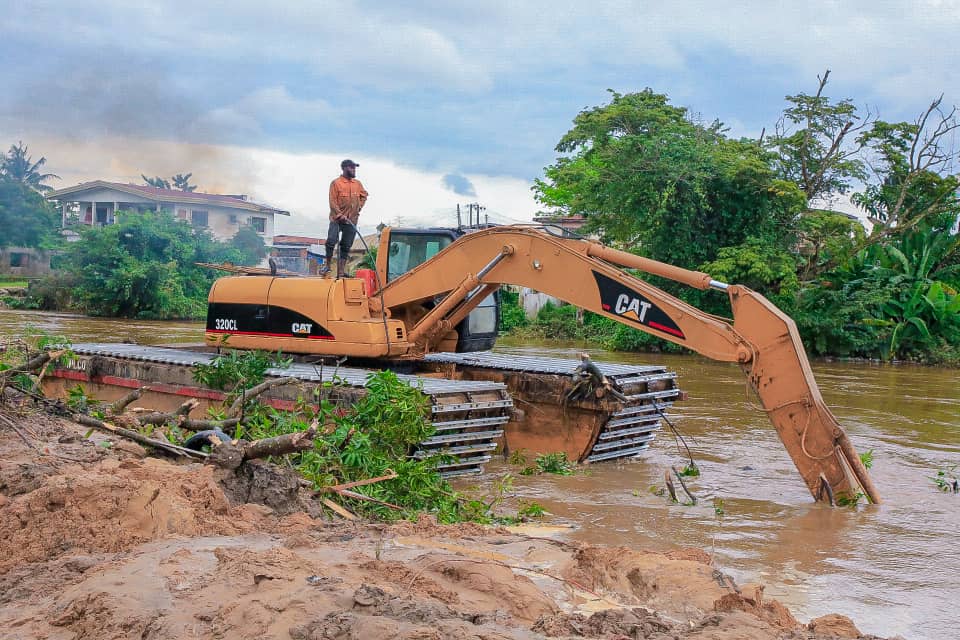Opinion
Osun Govt Takes Proactive Steps In Curbing Flood In The State By Toyin Adeoye

Floods are among most common and most destructive natural hazards on earth. There are few places in the world where flooding is not a concern. Any area where rain falls is vulnerable to floods, although rain is not the only cause of flooding. Most floods take hours or even days to develop, giving residents time to prepare or evacuate, others generate quickly and with little warning. The so-called flash floods may be extremely dangerous, instantly turning a bubbling brook or even a dry wash into rushing waters that sweep everything in their path downstream.
Climate change is increasing the risk of floods worldwide, particularly in coastal and low-lying areas, because of its role in extreme weather events and rising waters. The increase in temperatures that accompany global warming can contribute to hurricanes that move more slowly and drop more rain, funneling moisture into atmospheric rivers like the ones that usually lead to heavy rains and flooding.
Floods cause more than $40 billion in damage worldwide annually, according to the Organization for Economic Cooperation and Development. Death tolls have increased in recent decades to more than 100 people a year. When floodwaters recede, affected areas are often blanketed in silt and mud. The water and landscape can be contaminated with hazardous materials such as sharp debris, dangerous aquatic animals and untreated sewage. Potentially dangerous mold blooms can quickly overwhelm water-soaked structures.
Also, residents of flooded areas may be left without power and clean drinking water, leading to outbreaks of deadly waterborne diseases.
Humans have increased the risk of death and damage by increasingly building homes, businesses, and infrastructure in vulnerable floodplains. Added to this are poor disposal habits of people who will prefer disposing their wastes on waterways before and during rainfalls and other courses.
In an attempt to mitigate the risk, Osun State Government’s has mandated the residents of flood-prone areas to set construction requirements that would make their buildings to be safe from the effects of flood by getting advise from professionals, particularly in the government relevant agencies.
Efforts of the State Government to mitigate floods in Osun are yielding results. Such results are born out of fact that the government has risen up to her responsibility through the Ministry of Environment and Sanitation to prevent, control and mitigate the effects of flood and erosion in the State since the assumption in office of Governor Gboyega Oyetola.
Within the past two years or thereabout, the present administration has controlled the flood in many communities through dredging and desilting of various streams in order to arrest the incessant flood and erosion which usually accompany each rainy season.
Within almost two years, the present administration has opened up many rivers and streams for easy flow and prevention of flood and erosion. The government has embarked on the dredging and desilting of Aketi and Amuni streams in Ila-Orangun; Awesin and Elentere streams in Ifon-Osun; Oloowa and Okun streams in Odeomu; Naira-and-Kobo, Ako, Sagba, Mogimogi and Moro streams in Ikire/Axis. In Ile-Ife town, Opa, Onidawa, Agbara and Safejo streams were controlled alongside Alanamo stream in Ofatedo; Awere stream in Owode-Ede; and Surulere stream in Owode Ilesa.
Recently, the Governor of the State of Osun, Governor Gboyega Oyetola led other members of his cabinet to celebrate Year 2020 World Environment Day by planting trees at the Osun Riverside, Gbodofon, to commemorate the planting of one million trees in an attempt to protect our bodies of water in the State.
The state government through its consistent education and sensitization programmes on different media has enhanced safety of people of the state and reduces the vulnerability to flood damage by improving the effectiveness of public information programmes. It has through the programme coordinated public education about flood risks in Osun State. Messages and outreach activities to promote improved understanding of flood hazards and provide specific actions that can be taken to reduce risks associated with flood.
It could be recalled that the Year 2020 Annual Flood Outbreak report by the Nigerian Hydrological Services Agency (NIHSA) asserts that Ila Local Government has been identified as highly probable flood risk area and twelve others which include; Ayedire, Ede North, Ede South, Egbedore, Ifelodun, Isokan, Iwo, Odo Otin, Ola Oluwa, Olorunda, Orolu and Osogbo Local Government areas.
On this note the general public has been advised to make concerted moves to prevent flood especially in the stated areas, as the present administration will not rest on its oars in making Osun a flood free State.
Toyin Adeoye is a Press Officer, Ministry of Environment and Sanitation, Osun State
-

 News4 days ago
News4 days agoInsecurity: Bandits Unleash Terror In Kogi, Kano, Sokoto, Kwara
-

 News4 days ago
News4 days ago2026: We’re Yet To Pick Our Guber Candidate- Osun ADC
-

 News4 days ago
News4 days agoInternational Disability Day: Gov Adeleke Unveils Empowerment Programme For Persons With Disabilities
-

 Politics4 days ago
Politics4 days agoOsun 2026: Group Charges APC To Consider Aspirant With Unquestionable Character As Party’s Flagbearer














